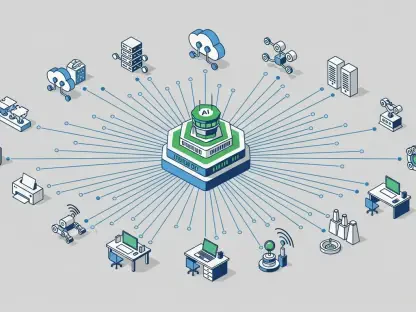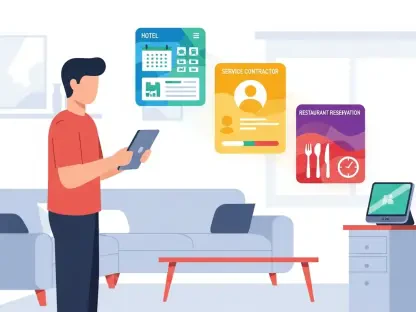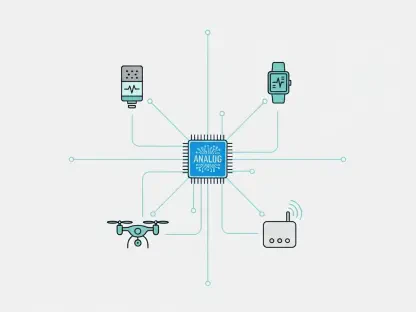The realm of IT support is undergoing a significant transformation as organizations grapple with the demands of an increasingly digital and remote working landscape. Real-time experience management is emerging as the new paradigm, promising to rectify the inadequacies of outdated IT support models. By leveraging advanced analytics, automation, and real-time data, this innovative approach aims to ensure a seamless, efficient, and adaptable work environment. As enterprises strive to provide optimal end-user experiences, the focus shifts from traditional reactive methods to proactive solutions that anticipate and address issues before they affect the user. This article explores how real-time experience management is reshaping IT support, highlighting its implications and benefits for digital workplaces.
Understanding the Shift in IT Support
Transitioning from Reactive to Proactive Approaches
Traditional IT support models, predominantly reactive, are increasingly ill-suited to modern digital demands. The reactive nature of these legacy systems often results in delayed response times and inefficiencies that can negatively impact user experience and productivity. Real-time experience management offers a transformative alternative by enabling IT teams to predict and preempt technical issues before they occur. This shift not only reduces downtime but also enhances operational efficiency, driving productivity and allowing enterprises to stay competitive in fast-paced markets.
Real-time experience management employs sophisticated tools and methodologies that empower IT teams to move beyond conventional troubleshooting. Key components of this proactive approach include comprehensive data analysis and real-time monitoring, which provide the insights necessary to identify potential disruptions early. By interpreting telemetry from user devices, applications, and networks, IT professionals can address issues swiftly and minimize their impact on employees and the wider organizational infrastructure. Essentially, real-time experience management equips organizations with the capabilities needed to adapt to unpredictable situations smoothly.
Comprehensive Real-Time Monitoring and Analytics
Real-time monitoring and analytics lie at the heart of modernizing IT support in the digital era. Through advanced data-gathering processes, enterprises can collect telemetry from various sources—be it user endpoints, collaboration tools, or network infrastructures. With real-time data correlation, IT professionals gain a deeper understanding of digital workplace performance from the user’s perspective. This knowledge allows for timely interventions and ensures end-user experiences are consistently optimized, contributing to enhanced overall satisfaction and productivity.
These highly intuitive analytics offer new avenues for preempting concerns and refining existing processes. As analytics tools increasingly integrate artificial intelligence capabilities, IT departments can forecast potential issues based on historical data, network loads, and system behavior patterns. Such predictive capabilities allow organizations to implement automated solutions that remediate problems without human intervention, streamlining support operations and freeing resources for strategic initiatives. By prioritizing real-time analytics, enterprises pave the way for progressive IT support that is attuned to dynamic digital environments.
Emphasizing User Satisfaction
User Experience as a Critical Metric
The evolution in IT support is marked by an increased emphasis on user satisfaction as a fundamental measure of effectiveness. While traditional support models often focused solely on metrics like uptime or system health, real-time experience management shifts the focus towards user-centric experiences. This approach acknowledges that user satisfaction directly correlates with productivity and engagement, fostering environments where friction points are intuitively identified and addressed. By aspiring to deliver quality user experiences tailored to individual needs, real-time experience management positions itself as an essential competency in modern workplaces.
Integrating user experience metrics into the broader IT strategy requires a comprehensive understanding of user behavior and preferences. IT departments must employ robust data collection methods to ascertain user requirements and detect patterns that influence productivity. Regular feedback loops, informed by real-time insights, enable continuous improvement, ensuring support systems remain aligned with evolving expectations. By embedding user satisfaction into standard performance metrics, enterprises cultivate a workplace culture focused on results and employee engagement, ultimately driving organizational success.
Emergence of Autonomous IT Support Systems
The rise in real-time experience management naturally inclines toward increased automation and autonomy within IT support systems. By seamlessly merging analytics, predictive insights, and automation, businesses develop frameworks where IT systems can respond to situational demands independently. This approach not only complies with productivity objectives but also empowers decision-makers to reallocate resources from routine tasks to strategic enhancements. In essence, autonomous IT environments transform experience management into the primary benchmark for IT success, heralding a new era in predictive problem-solving.
Through comprehensive platforms augmented by machine learning algorithms, autonomous IT support systems redefine operational agility. These intelligent systems account for potential disruptions and skillfully adapt processes to safeguard user experiences, offering peace of mind across organizational levels. Moreover, as these technologies mature, predictive models refine their focus on system performance inconsistencies, improving responsiveness and preemptive engagement. Organizations increasingly rely on these sophisticated solutions to achieve streamlined operations that capitalize on the benefits of automation.
Advancements in IT Support Infrastructure
Towards a More Intelligent, Experience-Centric Approach
The overarching movement towards a more intelligent and experience-centric IT support infrastructure underscores the need for real-time experience management. By adopting this forward-thinking strategy, enterprises usher in a departure from traditional support models dependent on legacy systems and manual intervention. Rather than viewing IT support as merely reactive, businesses prioritize seamless integrations that enhance responsiveness and escalate issue resolution capabilities. As a result, improved user satisfaction, lower support costs, and heightened employee engagement become defining characteristics, ensuring enterprise-wide success.
A convergence of real-time analytics, automation, and artificial intelligence powers the evolution of IT support infrastructure. By fostering an environment where IT oversight can autonomously address technological and human-centric needs, organizations increase their capabilities in adapting to dynamic conditions efficiently. This holistic approach serves as a strategic imperative, enhancing collaborative efforts and innovative adaptations. With user experience now a key component, enterprises that embrace these transformational practices build IT support models that are fundamentally aligned with modern operational priorities.
Unifying Experience Management Through Technology
The integration of advanced technology and user-centric principles unifies real-time experience management into a cohesive framework for IT support. This forward-looking approach synthesizes predictive insights, real-time monitoring, and automation to deliver tailored solutions that account for both technological and human factors. Achieving balance between user satisfaction and operational efficiency requires acknowledgment of the competitive advantages provided by a seamless digital environment. Businesses that harness these capabilities set the foundation for omnipresent success in contemporary digital ecosystems.
By integrating solutions that bolster preemptive action and continuous improvement, IT departments embrace real-time experience management as indispensable to strategic objectives. The emphasis on user-centric design combined with robust analytics enhances responsiveness and adaptability, ensuring IT support systems address evolving demands effectively. Ultimately, experience management adopts nuanced strategies informed by insights, setting the stage for enterprises to elevate their digital presence and cultivate sustainable growth.
Conclusion: Paving the Way for Future IT Strategies
Traditional IT support models, which mainly operate on a reactive basis, are becoming less suitable for today’s digital world. These outdated systems often lead to delays and inefficiencies, harming user experience and lowering productivity. Real-time experience management offers a groundbreaking solution by allowing IT teams to foresee and prevent technical problems before they arise. This proactive approach not only minimizes downtime but also boosts operational efficiency, enhancing productivity and keeping businesses competitive in fast-evolving markets.
Real-time experience management uses advanced tools and strategies to let IT teams go beyond basic troubleshooting. It involves thorough data analysis and real-time monitoring to detect potential disruptions early. By analyzing telemetry from user devices, applications, and networks, IT professionals can quickly resolve issues and lessen their impact on both employees and the larger organization. In essence, real-time experience management provides companies with the tools to smoothly navigate unpredictable situations, ensuring seamless operations in the face of modern challenges.









